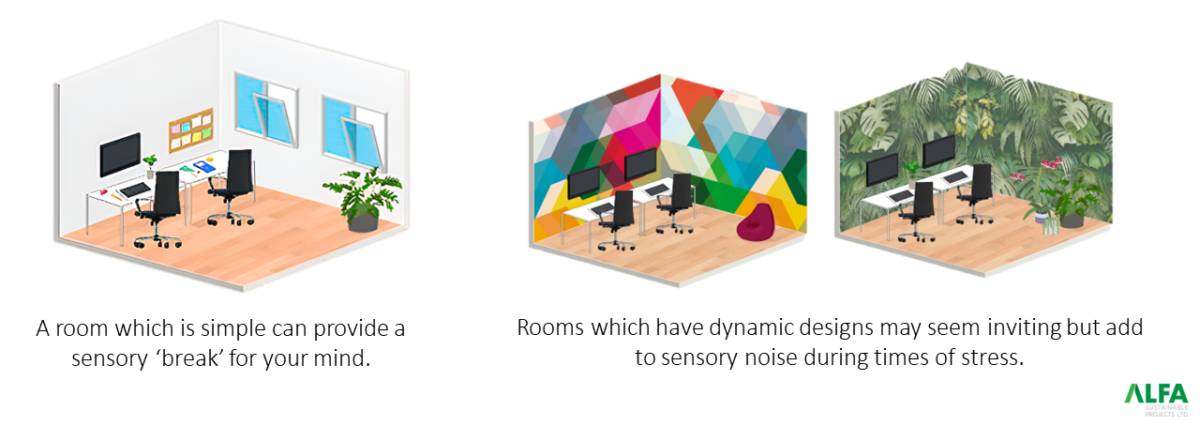
Biophilia
Biophilic design encompasses the idea of integrating natural systems and patterns into space design to improve focus and reduce stress. Terrapin defined 14 Patterns of Biophilic Design which can be read here, we’d like to highlight a few below which have relevant insights for times of stress.
Thermal & Airflow Variability, Presence of Water:
The feeling of a breeze, dynamic thermal sensations, and the presence of water (think: the radiant sun warming your back, a soft breeze on your arms while you listen to the sounds of the ocean’s waves) lend to feelings of calm and reduces blood pressure. Our bodies’ systems are attuned to appreciate these sensations. Try opening a window if you live in a quiet area, take some time to sit in the sunshine.
Refuge:
A space which is closed from behind and above can create a sense of refuge and safety. Think about where your desk and chair are positioned; with your back to a door? Could it be turned so that instead, the corner of the room is behind you? Perhaps try bringing your task to a couch with a high back.
We hope these tips helped you! If you want to hear more about how they can be professionally applied to your office design don’t hesitate to be in touch. Wishing you peaceful days ahead.
This post was written in partnership with The Sensory Integration Lab at Tel-Aviv University: עיצוב סביבות במצבי דחק 2.11.23

